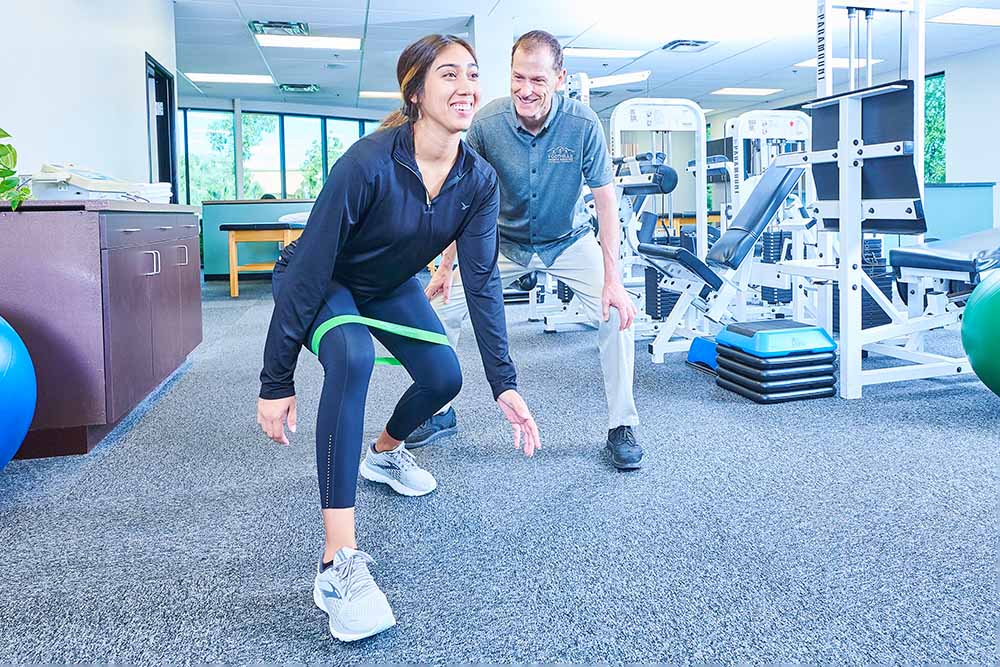Physiotherapy is often seen as a crucial element in the athletic realm, providing the essential tools and strategies to improve performance while minimizing the risk of injury. For athletes, whether amateur or professional, understanding the components of physical therapy can be the crucial factor to training intelligently and safe. This introductory guide aims to clarify the different aspects of physical therapy, from methods for managing pain to the recovery processes following injuries or surgeries.
Participating in sports brings with its own set of difficulties, often leads to various injuries such as strains and sprains. However, physical therapy serves not only as a pathway to recovery but also as a preventative measure designed to enhance athletic performance. By focusing on customized workouts and rehabilitation programs, athletes can gain increased mobility, flexibility, and strength. As we examine the advantages of physical therapy, it's crucial to highlight how it assists in both recovering from injuries and long-term athletic health, ensuring that athletes stay at their optimal performance levels.
Comprehending Physical Therapy and Its Benefits
Physical therapy is a dedicated form of healthcare concentrating on the treatment and rehabilitation of injuries, disabilities, and medical issues. It utilizes various techniques, like physical exercises, manual therapy, and education, to assist individuals restore mobility, strength, and overall function. For athletes, physiotherapy plays a key role in both recovery from injuries and the boost of physical performance, making sure they can safely and effectively take part in their sports.
One of the main advantages of physiotherapy is its success in pain management. Through specific exercises and treatments, physiotherapists help alleviate pain caused by injuries or chronic conditions. This not only promotes recovery but also enhances quality of life, allowing individuals to go back to their normal activities without discomfort. Grasping the connection between physical therapy and managing pain is crucial for athletes who may experience a range of injuries and wear-and-tear during practice and competition.
In addition to pain relief, physical therapy offers a wide array of benefits that go beyond recovery from injuries. It can improve range of motion, strength, and overall mobility, which are vital elements for sportspeople looking to improve their performance. Furthermore, physical therapy plays a significant role in preventing injuries by educating athletes on proper techniques and body mechanics. By integrating regular physical therapy sessions into their training routine, sportspeople can sustain peak physical condition, lower the risk of future injuries, and promote long-term health.
The Importance of Physical Therapy in Injury Recovery
Injury recovery is a critical aspect of an athletes' path, and physiotherapy plays a crucial role in ensuring that athletes return to their sport securely and effectively. When an individual sustains an injured, their body undergoes a number of physiological changes that can lead to discomfort, decreased mobility, and lowered strength. Physical therapists assess these changes and create customized rehabilitation programs that address the specific needs of each athlete, promoting healing through targeted exercises, manual therapy techniques, and education about body mechanics.

One of the primary benefits of physiotherapy in injury recovery is the emphasis on rehabilitating functionality and minimizing the risk of re-injury. Through a systematic rehabilitation plan, physical therapists guide athletes in reacquiring movement patterns and strengthening weakened areas. This process not only promotes a quicker return to sports but also equips athletes with the understanding and skills to prevent future injuries. A thorough understanding of their bodies helps individuals make wise decisions regarding activity levels and recovery strategies.
Moreover, physical therapy tackles the mental aspects of recovering from injuries, which are often overlooked. Athletes may experience anxiety, fear, or frustration during their recovery process. A supportive physiotherapist provides support and motivation, helping athletes regain self-assurance as they progress through their rehabilitation. This comprehensive approach ensures that athletes not only recover in body but are also mentally prepared to perform at their best once they return to the field or field.
Physical of Competitors: Strategies and Methodologies
Physiotherapy serves a crucial function in improving performance and stopping injuries among sportspeople. physical therapist the woodlands involves a personalized evaluation to spot areas of vulnerability and discrepancy. This assessment allows clinicians to design a custom rehabilitation program that focuses on specific requirements, ensuring athletes can securely progress in their exercise regimen. Techniques such as weight training, mobility exercises, and skill-specific drills are incorporated to boost overall athletic performance while reducing the risk of subsequent injuries.
Including modalities like manipulative therapy, dry needling, and ultrasound therapy can also be advantageous in treatment plans. These techniques help to relieve pain, increase circulation, and promote healing in injured areas, further enhancing recovery times. Moreover, sportspeople are educated on proper biomechanics and ergonomics, which can greatly lower the likelihood of experiencing repetitive stress injuries during training and competition.
Finally, continuous communication between physical therapists and athletes is necessary to assess progress and make required adjustments. Ongoing sessions encourage athletes to stay engaged in their rehabilitation journey, promoting a preventative approach to injury management and prevention. By emphasizing physical therapy, athletes can not only bounce back from injuries but also create strategies that improve their performance and longevity in their chosen sports.
